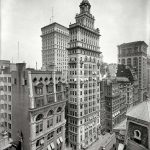It is not an accurate statement to say that coworking spaces are only for younger generations, according to the former president and CEO of Workshop Cafe, which is both a flexible workplace and a coffee shop.
“One big misconception is that this is an industry for young people, for gig economy people, for Generation Z and Millennials,” Rance Hesketh told Via News in a recent exclusive interview.
According to Investopedia, “In a gig economy, temporary, flexible jobs are commonplace and companies tend toward hiring independent contractors and freelancers instead of full-time employees.”
Generation Z is the demographic cohort succeeding Millennials, who are commonly called the 1980s and 1990s generations.
Shifting Demographics
Rance says it is true that young professionals account for a large proportion of coworking space clients but the desire to work at a productive environment exists among older people as well.
“They’ve done a number of studies on older employees, which showed the same tendencies [in the elderly],” he noted, adding that the research into this issue indicates that 30 to 70 percent of elderly workers would like to work from home or work flexibly.
“I think everybody is looking for that flexibility…because they’re not finding themselves productive in their current work environments. It’s not the company. It’s just that the work environment isn’t productive.”
A survey of about 2,000 people by Deskmag online magazine—the results of which were published in a 2018 annual report—showed that using shared workspaces is becoming increasingly popular among people in their 50s.
“Today, the 50+ population is the fastest-growing segment of coworking spaces, followed by 40-49-year-olds,” AllWork.Space online news publication wrote, citing the report.
Individuals aged 50 or more represent the fastest-growing coworking membership segment.
2018 report by Deskmag online magazine
AllWork.Space says the shifting demographics can be attributed to various factors, including the fact that people are living and working longer, the first members of coworking spaces themselves have aged, the number of mobile-friendly industries has increased, and the number of jobs that require manual labor has declined.
Toll of Commuting
According to Rance, another driver of the new trend is that more members of the older generations are looking to find a better work-life balance.
He explained that studies have shown that commuting to work can be more stressful than working.
“The average commute is typically between 50 and 60 minutes a day. So if 50 or 60 minutes of your day is more stressful than actually being at work, that’s not a good starting point. If you can reduce that by even one day by working from home or working from a coworking center, you’ve reduced your weekly stress in that regard by 20 percent. That’s significant.”
The Ford European Commuter Survey of 5,503 commuters in Europe’s major cities, namely Barcelona, Berlin, London, Madrid, Paris, and Rome—which was published in 2015—showed that “26 percent of people find commuting stressful, compared to 23 percent who find work stressful.”
Different Types of Coworking Spaces
Rance believes that the coworking industry will continue to grow and that the most interesting type of shared workspaces, in his view, is the on-demand one.
“I was the CEO of Workshop Cafe so I spent a year working in San Francisco starting to understand the coworking space. There’s a lot of variety in coworking. So you have companies like WeWork, who are breaking up offices and re-selling them. You have kind of more club-oriented or member-oriented coworking spaces where you effectively buy membership, be it a monthly membership, a quarterly membership, or an annual membership.”
And the type of space that Workshop Cafe offers is the “on-demand” one, Rance said, adding that it is his favorite type of coworking spaces.
“You can walk in and you can decide to work for 11 minutes or all day. You can come back every day. You can come back once every three months. It’s entirely your discretion how you want to utilize your time. I think that’s the most interesting type and also the most applicable to today’s economy,” he said.







